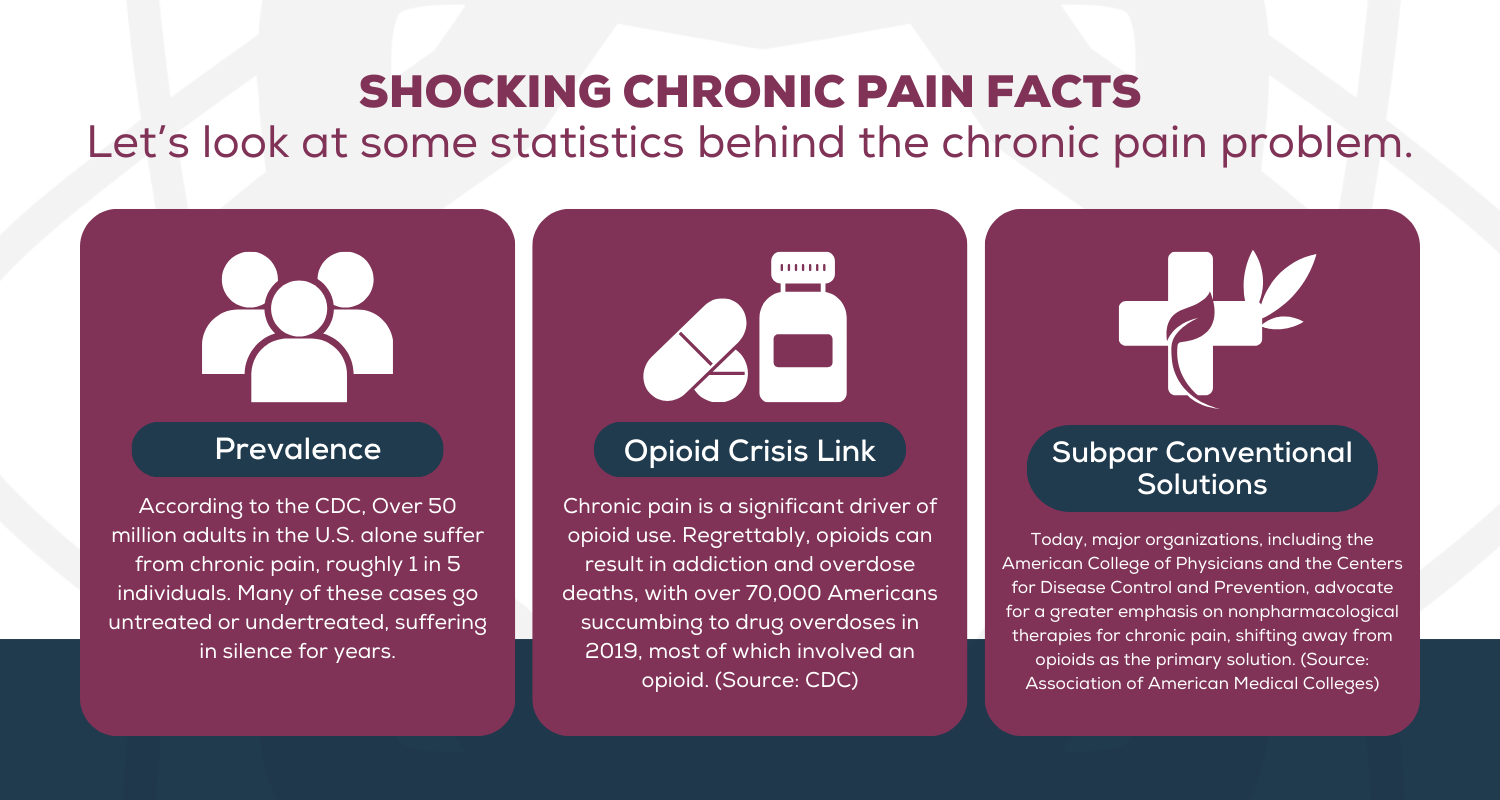
As the festive season unfolds, with its twinkling lights and joyful gatherings, it’s all too easy to get swept away in the celebrations and inadvertently sideline our health and fitness routines. This can be a particular concern for those managing chronic pain, where staying active is key to maintaining well-being. In this spirit, let’s explore practical and effective ways to stay active and pain-free during the holidays, guided by the principles of The Hache Protocol For Pain Resolution™.
The Importance of Staying Active
Engaging in regular physical activity is not just beneficial; it’s crucial, especially for those dealing with chronic pain. Exercise isn’t only about keeping fit; it’s a vital tool in pain management. It can effectively reduce pain, enhance mood, and boost energy levels. The Centers for Disease Control and Prevention (CDC) suggests that adults aim for at least 150 minutes of moderate-intensity aerobic activity each week, coupled with muscle-strengthening exercises on two or more days. These guidelines serve as a solid foundation to structure our holiday fitness regime.
Actionable Tips for Holiday Fitness:
- Start with a Plan: Setting goals is the first step to success. Begin by establishing realistic and attainable physical activity goals for the holiday period. Every bit of exercise counts, and even minimal amounts can significantly impact managing pain and keeping fit.
- Incorporate Family and Friends: Turn fitness into a festive activity. Engage in family walks and organize friendly games like touch football or even impromptu dance-offs. These activities keep you active, enhance the festive spirit, and bring joy through shared memories.
- Indoor Exercises: The chilly weather shouldn’t freeze your fitness goals. Embrace indoor exercises such as yoga, Pilates, or basic stretching routines. These can keep you moving, flexible, and comfortable, which is especially important when outdoor activities are less appealing. Check out our blog, 8 exercises for people in pain, to learn how to get started today!
Understanding Muscle Health
Muscles, often overlooked in our health, play a critical role in overall well-being and pain management. They are pivotal in regulating hormones and producing energy. The more muscle mass we maintain, the more mitochondria we have in our cells, translating to greater energy availability. This is particularly valuable during the holiday season, which often demands more from us, both physically and mentally.
Maintaining muscle health through regular exercise, therefore, becomes not just a strategy for managing pain but also a means of ensuring we have the energy to enjoy the festive season fully. By combining these actionable fitness tips with an understanding of muscle health, we can navigate the holidays not only with joy but also with comfort and well-being.
- To learn more, read our blog for 4-At Home Exercises for People in Pain.
Mitochondrial Health and Energy
Winter’s shorter days and longer nights can often lead to decreased energy levels, a phenomenon sometimes amplified in individuals managing chronic pain. This is where the importance of mitochondrial health comes into play. Mitochondria are the powerhouses of our cells, generating the energy our bodies need to function optimally. During winter, boosting mitochondrial health is crucial, and our Mitochondrial Recharge Protocol offers a strategic approach to enhance energy levels, even when staying active feels challenging. This protocol, designed to optimize mitochondrial function, can be instrumental in maintaining your activity levels and overall well-being during the holidays.
Embracing this protocol can transform your holiday experience, helping you stay energetic and vibrant through the season. The Mitochondrial Recharge protocol is simple, effective, and is now easier than ever with our Mitochondrial Recharge Kit.
The Power of Walking
Walking is a remarkably simple yet effective form of exercise that fits seamlessly into any lifestyle, even during the busy holiday season. Integrating a daily walk into your routine can significantly benefit your health. According to Mayo Clinic, aiming for 10,000 steps a day is a great goal, as it helps keep your body active and your energy levels up. Walking is particularly beneficial because it’s low-impact, accessible to people of all fitness levels, and can be done almost anywhere.
If achieving 10,000 steps seems daunting initially, start with a smaller, more manageable number and gradually build up. Consistency in walking can improve cardiovascular health, boost mood, and help manage weight during a season known for indulgence. Remember, every step counts towards a healthier you!
Stretching for Flexibility and Pain Management
After you’ve integrated walking into your daily routine, it’s important to include stretching to enhance flexibility and manage pain. Stretching not only helps in preventing injuries but also improves overall body movement. Here are three simple yet effective stretches:
- Doorway Chest Stretch: This stretch benefits those who spend a lot of time sitting or in front of computers. It helps open the chest and shoulders, relieves tightness, and improves posture.
- Seated Back Twist: An excellent stretch for the lower back, this move improves spinal flexibility and can relieve back pain, a common issue for many.
- Full-Body Stretch (Forward Fold): This stretch targets the entire back and legs, which is crucial for those who stand or walk a lot during the day. It helps relieve tension and improve overall flexibility.
Incorporating these stretches into your daily routine, especially after a walk, can significantly improve flexibility and aid in effective pain management. Regular stretching can be a simple yet powerful tool in your wellness arsenal during the holidays and beyond.
Learn more about these stretches and their benefits in our comprehensive blog on maintaining flexibility and pain management.
Incorporating Microcurrent Therapy
Microcurrent therapy is an innovative, non-invasive form of energy medicine that complements your exercise routine, especially for pain management and muscle toning. This therapy uses low-level electrical currents to relieve pain, reduce inflammation, and stimulate muscle healing and growth. It’s particularly beneficial for those managing chronic pain conditions, as it can provide relief without the side effects and addiction caused by pharmaceuticals.

Integrating microcurrent therapy into your holiday wellness plan can significantly enhance the effectiveness of your pain management regime, helping you stay vibrant, active, and comfortable throughout the season.
Ready to learn more about what microcurrent can do for you? Check out the best microcurrent devices for chronic pain here.
Combining Nutrition and Hydration
Alongside physical activity, proper nutrition and hydration are critical in maintaining a healthy diet and managing pain. During the holidays, being mindful of your diet and fluid intake is especially important. Focus on curating an anti-inflammation holiday table filled with fresh fruits, roasted vegetables, lean proteins, and whole grains, and avoid excessive sugar and processed foods. Staying well-hydrated is equally essential, as it helps maintain cellular health, supports metabolic processes, and aids in muscle recovery. By making conscious food choices and ensuring adequate hydration, you can support your body’s needs, complement your exercise routines, and effectively manage pain.
Parting Thoughts on a Healthy Holiday Season
The holiday season presents a unique opportunity to prioritize health and wellness amidst the festivities. You can embrace the festive spirit without compromising your physical well-being by integrating walking, stretching, strength training, microcurrent therapy, and the Mitochondrial Recharge Protocol into your routine. Every step you take towards an active lifestyle contributes to a happier, healthier you. So, let’s move forward into this holiday season with a focus on staying active, pain-free, and joyful.
Here’s to a holiday season filled with health, happiness, and wellness for all!
Sources cited: https://www.hsph.harvard.edu/nutritionsource/2018/11/13/new-physical-activity-guidelines-for-americans/
https://www.mayoclinic.org/healthy-lifestyle/fitness/in-depth/10000-steps/art-20317391





